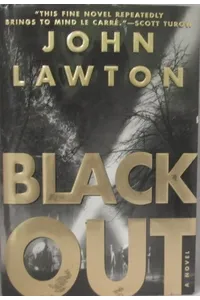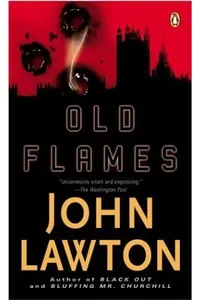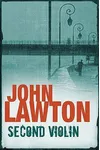Step into the shadowy, thrilling world of Inspector Troy, where London’s wartime grit meets Cold War intrigue! John Lawton’s Inspector Troy series follows Frederick Troy, a sharp-witted Scotland Yard detective navigating murder mysteries and espionage in mid-20th century Britain. With its blend of historical detail, complex characters, and twisty plots, this series is a must-read for fans of historical crime fiction.
From the bombed-out streets of the Blitz to the tense diplomatic dance of the 1950s, Troy’s investigations unravel corruption, betrayal, and the murky edges of national identity. Ready to dive into a world where every clue could shift the course of history?
How Inspector Troy Began
British author John Lawton, a former television producer with a knack for storytelling, launched the Inspector Troy series in 1995 with Black Out. Drawing on his love for history and crime fiction, Lawton crafted a series rooted in the turbulent eras of World War II and the Cold War. His protagonist, Frederick Troy—a wealthy son of a Russian émigré who defies his privileged roots to join Scotland Yard—emerged as a unique lens to explore Britain’s social and political upheavals.
Lawton’s meticulous research and experience in documentary filmmaking infuse the series with authenticity, capturing London’s wartime rationing, smoky pubs, and espionage-laden atmosphere. The series’ cinematic potential even caught Hollywood’s eye, with Columbia Pictures optioning the film rights.
The Heart of Inspector Troy
The series spans several novels, each weaving murder investigations with historical events. Black Out (1995) introduces Sergeant Troy during the 1944 Blitz, where a dismembered corpse leads him into a web of stateless refugees and military intelligence corruption. Old Flames (1996) jumps to 1956, with Chief Inspector Troy guarding Soviet leader Khrushchev while probing a navy diver’s mysterious death, uncovering Cold War betrayals.
A Little White Death (1998) tackles the 1960s, drawing on the Profumo affair as Troy investigates a supposed suicide that smells of murder, exposing scandals among Britain’s elite. A Lily of the Field (2010), a fan favorite, spans 1934 to 1948, following a young cellist’s journey from Vienna to London, intertwining her fate with Troy’s investigations amid war’s chaos.
Lawton’s style blends gritty police procedurals with espionage thrills, exploring themes like corruption, class divides, and the struggle for national identity. Troy, fluent in Russian and haunted by his outsider status, navigates a Britain grappling with its place in a changing world. The richly detailed settings—London’s rubble-strewn alleys, Vienna’s pre-war cafes—immerse readers in a vivid historical tapestry.
Why Inspector Troy Resonates
The Inspector Troy series stands out for its seamless blend of history and fiction, earning comparisons to John le Carré and Len Deighton. Lawton’s ability to humanize complex characters, from Troy’s flawed heroism to the morally ambiguous spies he encounters, keeps readers hooked. The series’ exploration of Britain’s wartime resilience and post-war identity crisis resonates with fans of thoughtful crime fiction.
With a loyal following and critical acclaim, including a WH Smith Award for Black Out, the series has carved a niche in historical thrillers. Its Hollywood buzz underscores its storytelling power, promising to bring Troy’s world to new audiences.
About Inspector Troy
- First published: 1995 (Black Out)
- Number of books: 8
- Setting: London, primarily 1934–1960s
- Award: WH Smith Award for Black Out (1995)
- Film rights: Optioned by Columbia Pictures
Grab Black Out and dive into Inspector Troy’s gripping world of murder, espionage, and historical intrigue today!







